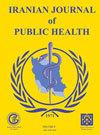Cross-Cultural Comparison of Fundamental Movement Skills of Children of Iranian Ethnicities
IF 1.4
4区 医学
Q3 Medicine
引用次数: 0
Abstract
Background: Cross-cultural studies can provide information on how different cultural contexts, lifestyles, and physical activity play a role in the development of motor skills. We aimed at a cross-cultural comparison of fundamental movement skills of children of Iranian ethnicities. Methods: The statistical population included boys and girls aged 7 to 9 years from the centers of Tehran (Persian), Lorestan (Lor), Khuzestan (Arab) and Kurdistan (Kurdish) provinces in 2021 year. Overall, 240 people (60 from each province) participated in this research as a sample. Ulric Gross Motor development test (2000) was used to measure the Fundamental Movement skills. Results: Results of multivariate analysis of variance showed that the main effect of culture (ethnicity) and interaction of culture and gender on Loco motor and object control skills were significant (P=0/001). In the total score of fundamental movement skills, the results showed that boys children scored significantly higher than girls (P=0/001). Moreover, Lor and Kurdish children significantly performed better than Fars and Arab children (P=0/001), but no significant difference was observed between the other ethnicities (P=0/452). Conclusion: Differences in the levels of fundamental movement skills of children of different ethnicities may be due to different physical and cultural activities, attitudes, and motor habits.伊朗族儿童基本动作技能的跨文化比较
背景:跨文化研究可以提供关于不同的文化背景、生活方式和体育活动如何在运动技能发展中发挥作用的信息。我们的目的是对伊朗族裔儿童的基本运动技能进行跨文化比较。
方法:统计人群为2021年德黑兰(波斯)、洛勒斯坦(洛尔)、胡齐斯坦(阿拉伯)和库尔德斯坦(库尔德)省中心地区7 ~ 9岁的男孩和女孩。总共有240人(每个省60人)作为样本参与了这项研究。使用Ulric大肌肉运动发展测验(2000)来测量基本动作技能。
结果:多因素方差分析结果显示,文化(种族)和文化与性别的交互作用对肢体运动和物体控制技能有显著影响(P=0/001)。在基本动作技能总分上,男生显著高于女生(P=0/001)。此外,洛尔族和库尔德族儿童的表现明显优于法尔斯族和阿拉伯族儿童(P=0/001),但其他种族之间无显著差异(P=0/452)。结论:不同民族儿童基本运动技能水平的差异可能与不同的体育文化活动、态度和运动习惯有关。
本文章由计算机程序翻译,如有差异,请以英文原文为准。
求助全文
约1分钟内获得全文
求助全文
来源期刊

Iranian Journal of Public Health
医学-公共卫生、环境卫生与职业卫生
CiteScore
2.20
自引率
7.10%
发文量
0
审稿时长
2 months
期刊介绍:
Iranian Journal of Public Health has been continuously published since 1971, as the only Journal in all health domains, with wide distribution (including WHO in Geneva and Cairo) in two languages (English and Persian). From 2001 issue, the Journal is published only in English language. During the last 41 years more than 2000 scientific research papers, results of health activities, surveys and services, have been published in this Journal. To meet the increasing demand of respected researchers, as of January 2012, the Journal is published monthly. I wish this will assist to promote the level of global knowledge. The main topics that the Journal would welcome are: Bioethics, Disaster and Health, Entomology, Epidemiology, Health and Environment, Health Economics, Health Services, Immunology, Medical Genetics, Mental Health, Microbiology, Nutrition and Food Safety, Occupational Health, Oral Health. We would be very delighted to receive your Original papers, Review Articles, Short communications, Case reports and Scientific Letters to the Editor on the above mentioned research areas.
 求助内容:
求助内容: 应助结果提醒方式:
应助结果提醒方式:


